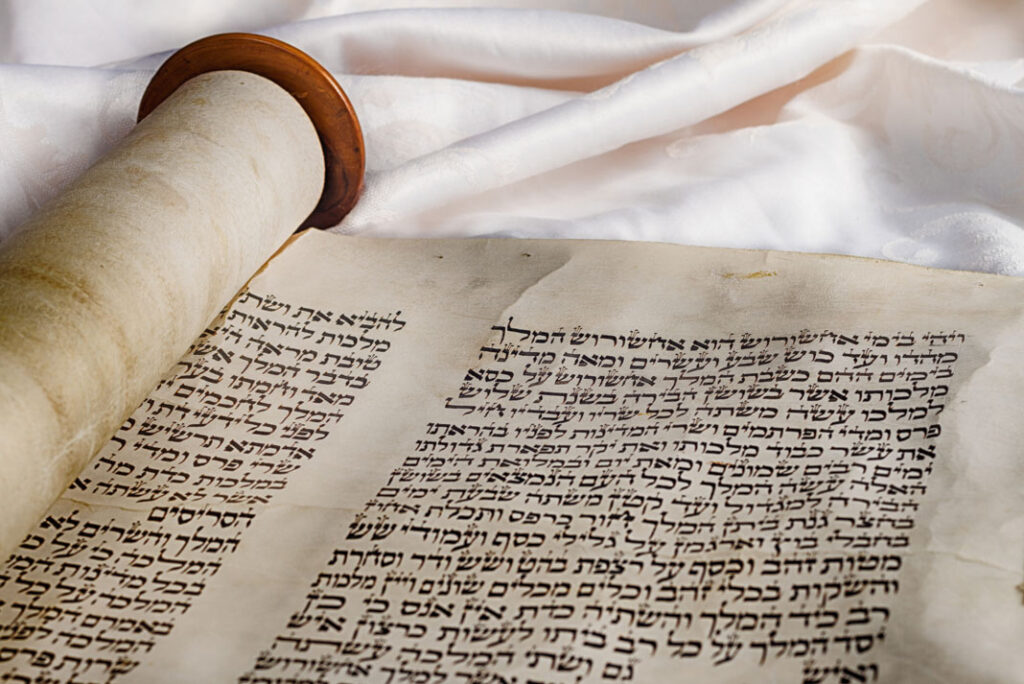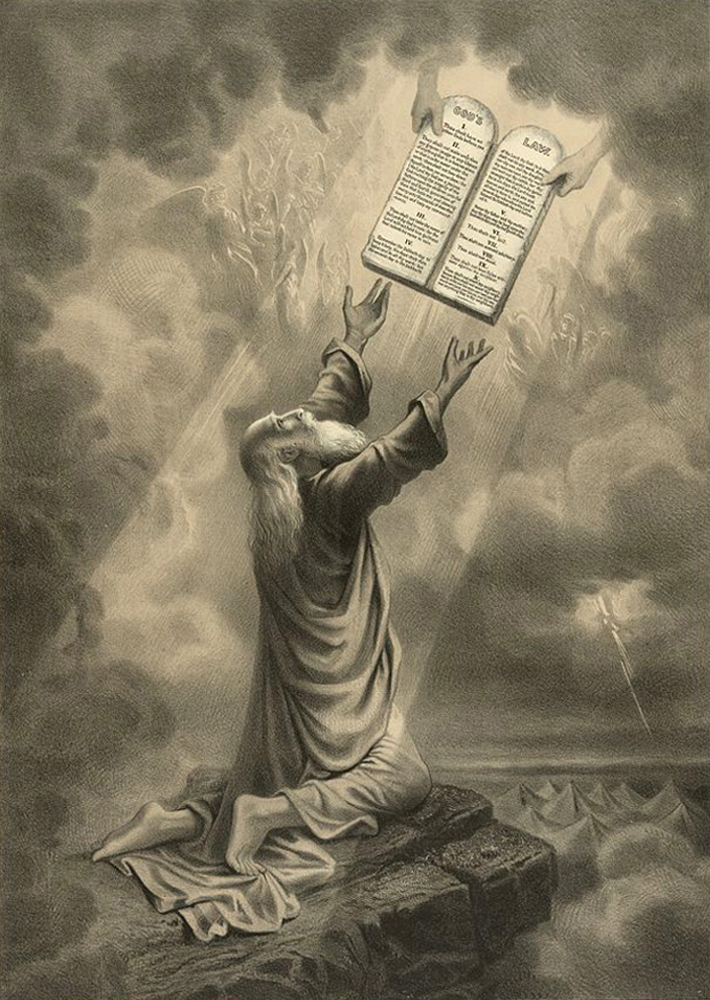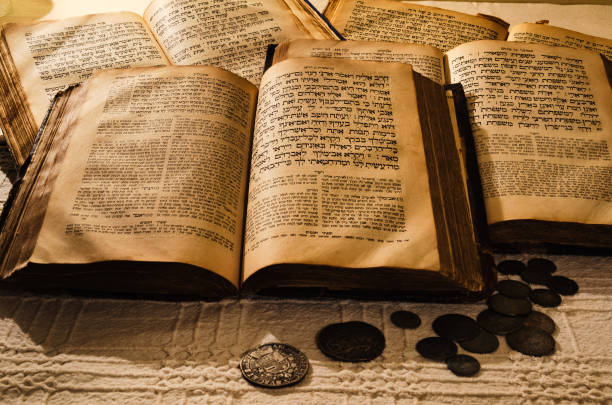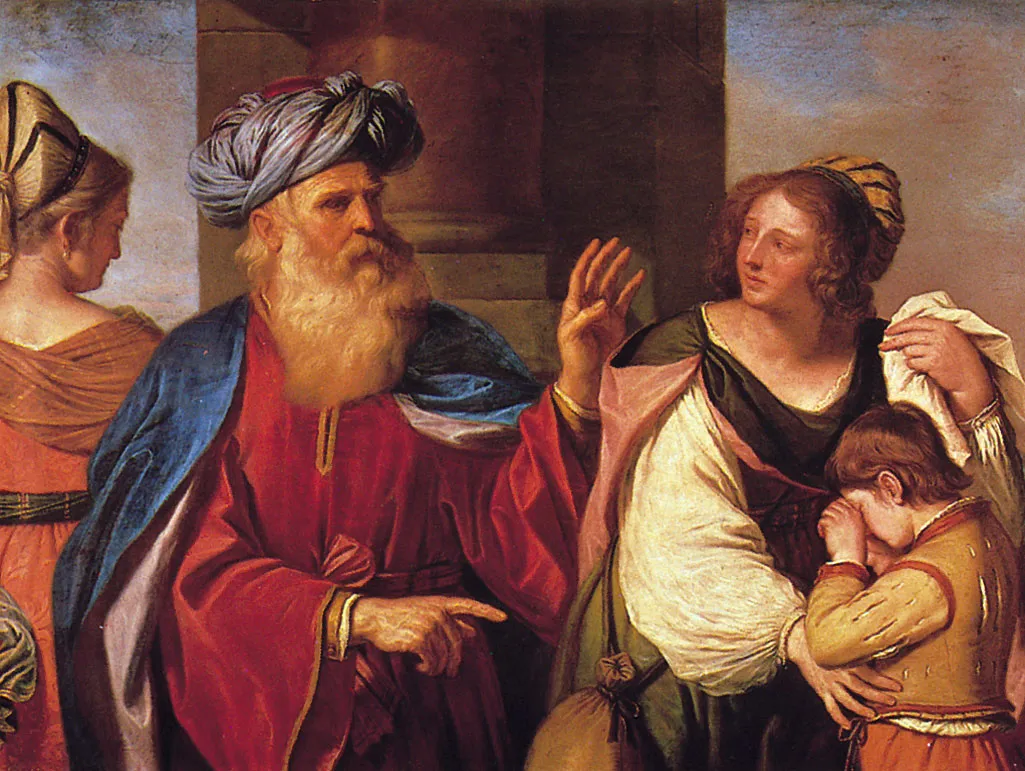Unlike Christians, Hindus and Parsis, there is no statutory law which governs marriages amongst the Jews. Unlike in the case of these three communities as also in the case of Muslim women, there is also no statute which provides for any matrimonial relief to an aggrieved party to a Jewish marriage. The nature and the incidence of a Jewish marriage and the matrimonial relief to which a Jewish husband or wife would be entitled must therefore be ascertained from their personal law.
Pentateuch
According to the Jews, their law has a divine origin. It was revealed by God in the wilderness of Sinai to Moses who transmitted it to the people and is to be found in the first five books of the Old Testament (namely, Genesis, Exodus, Leviticus, Numbers and Deuteronomy), commonly known by the Greek word “Pentateuch”, meaning “the five rolls”. The Jews call these five books (the Torah, meaning “The law” or, literally, “direction” or “guidance”.

Talmud
In course of time enormous bodies of law and commentary came to compiled known as the Talmud, meaning “teaching” or “instruction”, which interpreted, modified, expounded and adapted to changed times and circumstances the Scriptural Law. The Mishnah Talmud was reduced to writing in the second, the Palestinian Talmud in the fourth and the Babylonian Talmud in the sixth century.
The Talmud consists of
(1) the Mishnah, a systematic collection of religious – legal decisions developing the laws of the Old Testament and
(2) the Gamara which is a supplementary commentary based on the Mishnah.
The Mishnah states a law in a few lines while the Gamara is discursive being in the nature of a commentary on the Mishnah, giving the diverse opinions of leading rabbis on the Mishnah text, describing the circumstances which might require the law to be modified and giving illustrations.
The Origin of Talmud

Orthodox tradition ascribes divine origin to the Talmud also holding that Moses had left to his people not only a Written Law in the Pentateuch but also an Oral Law which had been handed down and expanded from teacher to pupil and from generation to generation.
This traditional view takes the twelfth verse of the twenty-fourth chapter of the Book of Exodus for its Scriptural basis: –
“And the Lord said unto Moses, come up to me into the mount, and be there: and 1 will give thee tables of stone, and a law, and commandments which I have written; that thou mayest teach them.”
This traditional view may best be stated in these words ascribed to Rabbi Simeon ben Lakish, who lived in the third century: –
Tables’ these are the Ten Words (namely, the Decalogue or the Ten Commandments) which are to be found, though in somewhat different language, both in Exodus XX and Deuteronomy; the ‘Law’ is the Scripture; ‘and the commandment’, that is the Mishnah: ‘which I have written’, these are the Prophets (namely, the ‘Former Prophets’ Joshua, Judges, Samuel, and Kings; and the Latter Prophets – Isaish, Jeremiah, Nzekiel and the twelve ‘Minor Prophets’) and Writings (namely, The Hagiographa consisting of (a) the poetical books – Psalms, Proverbs and Joh,
(b) The five Mogilloth (or Rolls) -Song of Songs, Ruth, Lamentations, Ecclesiastes and Esther, and
(c) the remaining books, Daniel, Ezra and Nehemiah, and Chronicles), to teach them’, that is the Gamara -thus instructing us that all these were given to Moses from Sinai.
Compilation of Talmud
The Talmud came to be compiled after the conquest of Judaea by Titus in 70 A.D. in the reign of the Roman Emperor Vespasian. After the Roman conquest the Jews came to be dispersed over three continents. Through all their wanderings, through the long centuries of cruel persecution to which they were subjected, wherever chance or misfortune drove them-
‘Whether in the ghettos into which they were herded or in countries which treated them with a tolerable degree of liberality, the Jews took with them their law and their customs. The Rabbi might have ceased to be a civil judge and became only a spiritual guide and the preceptor of his congregation, but he continued to be the interpreter of the Law. To a people so widely scattered as the Jews the Talmud acted as a unifying force and enabled them to cling to their identity. To them it was, in the words of the great German poet Henrich Heine, ‘a portable Fatherland’.
It was their means of survival in the midst of oppression and the danger of annihilation.
The sources of Jewish Matrimonial law
The matrimonial law as contained in the Talmud developed during the period of the Second Temple and in the centuries immediately following its destruction. It is an interpretation and enlargement of the Mosaic laws.

The enlargement consists partly in extended provisions made by analogy and deduction from the Biblical law; partly in the embodiment of those norms and usages which has been handed down by tradition from times immemorial and which had become a part of the law; and partly in new regulations enacted by the Sopherim (that is, the Scribes) and later religious and civil authorities to meet the exigencies of changed time and circumstances.
The Talmud minutely defines and regulates the forms of concluding and dissolving marriage and the marital rights and duties as also deals with innumerable casuistical questions concerning the matrimonial relationship. Several of the regulations contained in the Talmud, however, underwent some modifications by the decisions of the Gaonim who, after the Talmudic period, flourished until the eleventh century as the heads of the Babylonian Academics.
The oppressive bulk of the Talmud can be judged from the fact that its English translation by M. L. Rodkinson extends to ten volumes. This and the manner in which the law has been treated in the Talmud in the form of discussions and controversies led in the middle ages to codified abstracts being prepared for practical use.
The more important of these were:
(1) Yad Hachezaka of Maimonides. in the twelfth century, and
(2) the Sulchan Aruch of Rabbi Joseph Karo, in the sixteenth century.
The fourth out of the fourteen books of the former and the third part, “Eben Ha-Ezer”, of the latter deal with the matrimonial law of the Jews.
It is the Eben Ha-Ezer of Sulchan Aruch which has obtained general authority in Judaism and it is in accordance with the rules and regulations laid down therein that the Jews resolve questions concerning marriage and matrimonial relations.
The Jewish authorities used by Indian Courts in Jewish Matrimonial Matters
Eben Ha-Ezer of Sulchan Aruchalso has been accepted by B. J. Wadia, J., in David Sassoon Ezekiel v. Najia Noori Reuben.-
“I am fortunately saved the formidable necessity of resorting to the English translations of any of these works for the purpose of ascertaining the law on the subject (a task rendered more formidable by the fact that these works in the English translation are not easily available), because both learned counsel are agreed that I should ascertain that law by taking the aid of passages from the Pentateuch and placing reliance upon two books to which they have referred me and a book to which I have referred them.
Though a reference to the Pentatauch is a simple matter, since the Bible is the most easily available and the most widely translated book and is perhaps the best seller of all ages, any unqualified and unquestioning reliance upon any passage in the Pentateuch as containing rules of positive law and particularly rules of law to be applied to the present-day circumstances would be fraught with danger and lead to error, for in the Pentateuch positive law is intermingled with religious and moral precepts and ethical doctrines. This is equally true of the Talmud as also of any ancient system of jurisprudence.”
The Bombay High Court in Mozelle Robin Solomon vs Lt. Col. R.J. Solomon[1] referred Part IV of “Jewish Code of Jurisprudence” by Rabbi J. L. Kadushin, published in 1921 by the Talmud Society. This part deals with the Talmudical law decisions on marriage, divorce, domestic relations and certain questions of law.
Das, J., in Jacob v. Jacob[2] described this work as “an authoritative book containing translations of verses taken from earlier books of accepted authority and grouped under different heads in the form of a comprehensive code of the Jewish law”.
B. J. Wadia, J., in David Sassoon Ezekiel v. Najia Noori Reuben (supra) referred to this work as also to Dr. Mielziner’s book as works containing “very valuable expositions of the Hebrew Law”.
Reference
Mozelle Robin Solomon vs Lt. Col. R.J. Solomon; (1979) 81 BOMLR 578
[1] (1979) 81 BOMLR 578
[2] [1944] I.L.R. 2 Cal. 201
